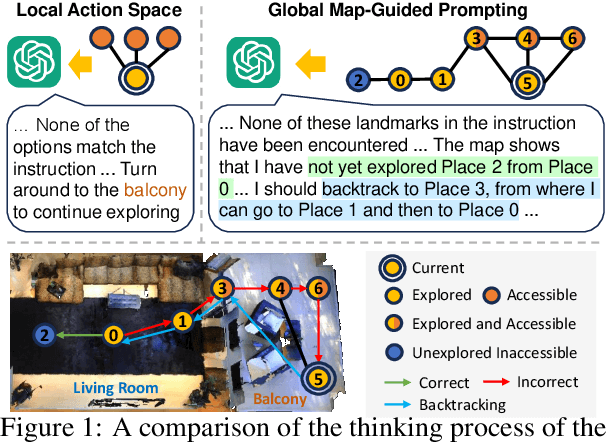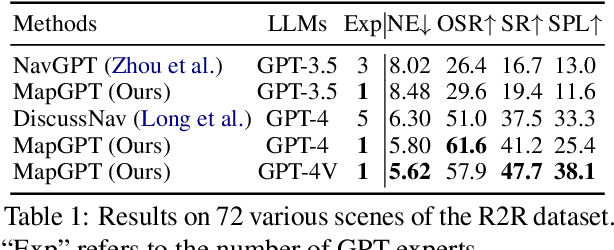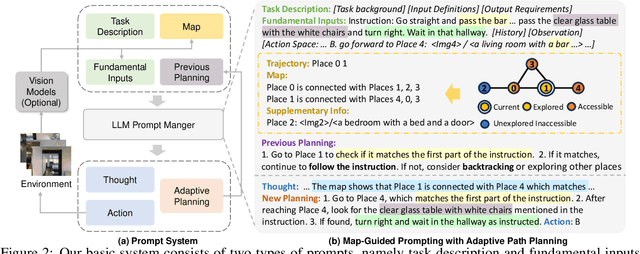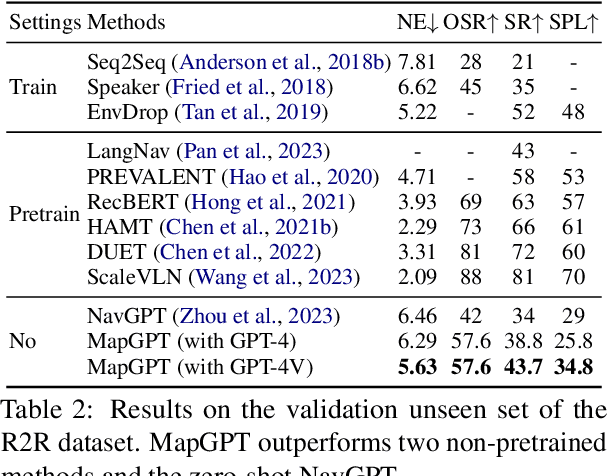MapGPT: Map-Guided Prompting for Unified Vision-and-Language Navigation
Paper and Code
Jan 14, 2024



Embodied agents equipped with GPT as their brain have exhibited extraordinary thinking and decision-making abilities across various tasks. However, existing zero-shot agents for vision-and-language navigation (VLN) only prompt the GPT to handle excessive environmental information and select potential locations within localized environments, without constructing an effective ''global-view'' (e.g., a commonly-used map) for the agent to understand the overall environment. In this work, we present a novel map-guided GPT-based path-planning agent, dubbed MapGPT, for the zero-shot VLN task. Specifically, we convert a topological map constructed online into prompts to encourage map-guided global exploration, and require the agent to explicitly output and update multi-step path planning to avoid getting stuck in local exploration. Extensive experiments demonstrate that our MapGPT is effective, achieving impressive performance on both the R2R and REVERIE datasets (38.8% and 28.4% success rate, respectively) and showcasing the newly emerged global thinking and path planning capabilities of the GPT model. Unlike previous VLN agents, which require separate parameters fine-tuning or specific prompt design to accommodate various instruction styles across different datasets, our MapGPT is more unified as it can adapt to different instruction styles seamlessly, which is the first of its kind in this field.
 Add to Chrome
Add to Chrome Add to Firefox
Add to Firefox Add to Edge
Add to Edge